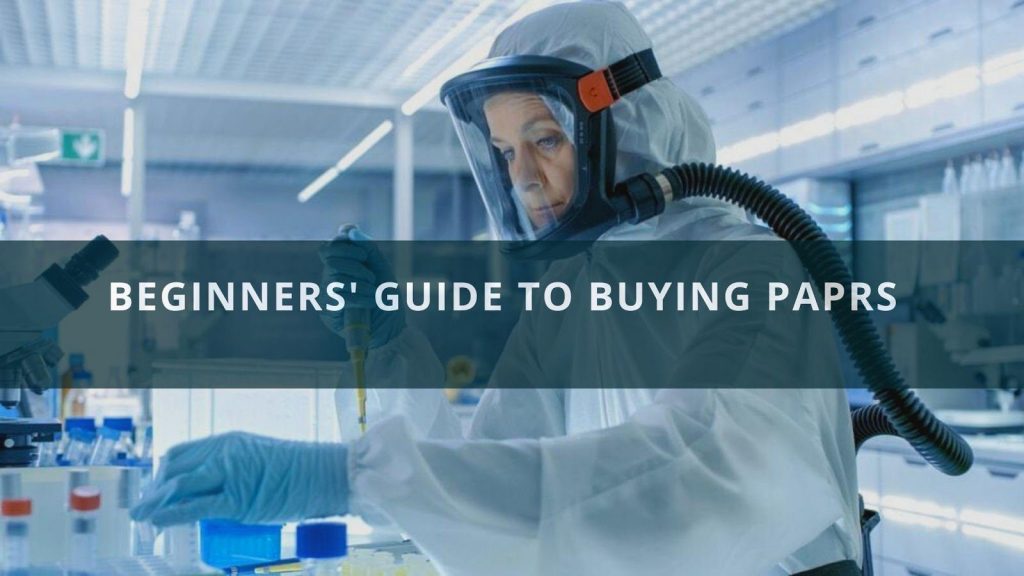When carefully selected, properly utilized, and effectively managed, powered air-purifying respirators (PAPRs) provide exceptional protection. They deliver enhanced safety, superior comfort, and ensure regulatory compliance for healthcare professionals who frequently encounter hazardous environments.
PAPRs work as powerful air-purifying devices that rely on cartridges and filters. Numerous online medical suppliers offer PAPRs with similar protective features. However, it’s crucial to understand factors like contaminant type and concentration, as PAPRs do not supply oxygen but filter airborne contaminants for safe breathing.
Read More: Trendiest Skincare Gifts for Yourself and Others
What sets PAPRs apart from standard respirators is the integration of a motorized blower that draws air through filters and delivers purified air to the breathing zone. This design offers significant advantages depending on the work environment and application. Additionally, most PAPR units include alarms or indicator lights to notify users when cartridges or filters require replacement.
Here are several key benefits of using powered air-purifying respirators. Explore them below:
Easy to Wear
PAPRs offer exceptional comfort by significantly reducing breathing resistance. When the motor blower pushes air into the facepiece, the wearer can breathe more naturally and easily. This is especially important for healthcare workers engaging in physically demanding tasks for extended periods. The comfort factor reduces the likelihood of the wearer removing the respirator prematurely, thereby minimizing exposure to hazardous environments.
Better Air Circulation
The motor blower in PAPRs ensures improved air circulation, facilitating better airflow to the user. This continuous air movement helps cool the wearer even in hot and humid conditions. However, it’s important to note that PAPRs do not heat or cool the air before delivery; the cooling effect is primarily due to air movement and ventilation.
High Assigned Protection Factor (APF)
PAPRs generally have a high Assigned Protection Factor (APF), which measures the level of respiratory protection they provide. The APF for PAPRs typically ranges from 25 to 1000, depending on the design and certification. OSHA-approved PAPRs often provide an APF of up to 1000, offering significantly greater protection compared to standard respirators. This makes PAPRs highly effective for protection against hazardous dust, chemical vapors, and airborne pathogens.
Choosing the Best Suitable Respirator
Before selecting the right PAPR, several important factors must be evaluated to ensure optimal protection. Let’s explore these considerations:
Contaminants
It’s critical to identify the types of contaminants present and their concentration levels. Most PAPRs have filtration capabilities for both gases and particulates; however, some units are specialized for either particulates or gases/vapors only. Knowing the specific contaminants involved helps in selecting the appropriate cartridges and filters to efficiently purify the air.
Location
PAPR units are battery-powered and worn by the user. If the work environment contains potentially explosive or flammable atmospheres, it is essential to select PAPRs that comply with relevant safety standards and hazardous location certifications to prevent electrical hazards.
Site Size
Since PAPR motor blowers are commonly worn on the waist as a belt, the size and layout of the worksite must be considered. For confined or narrow spaces, ensure the wearer can move safely and comfortably without the blower causing restrictions or hazards.
Head Gear
Evaluate the type of headgear required, such as a tight-fitting facepiece, loose hood, or chemical splash protection. Some PAPRs are also compatible with helmets meeting ANSI Z87.1 impact protection standards. The choice depends on the specific hazards and comfort preferences of the wearer.
Once these criteria are assessed, selecting the appropriate powered air-purifying respirator becomes more straightforward. It’s always advisable to purchase PAPRs from reputable online medical suppliers who specialize in personal protective equipment for high-risk medical and industrial environments. Selecting the right PAPR is a critical step that requires thorough evaluation to ensure maximum safety and comfort.
Frequently Asked Questions (FAQs)
What is a Powered Air-Purifying Respirator (PAPR)?
A PAPR is a type of respirator that uses a battery-powered blower to force air through filters or cartridges and supply purified air to the user’s facepiece, hood, or helmet.
How is a PAPR different from other respirators?
PAPRs provide a higher level of protection with less breathing resistance due to the motor blower. They also offer increased comfort and are suitable for long-duration use.
Can PAPRs be used in explosive or flammable environments?
Yes, but only PAPRs certified for hazardous locations should be used in such environments to avoid ignition risks.
Do PAPRs provide oxygen?
No, PAPRs filter contaminated air but do not supply oxygen. They are not suitable for oxygen-deficient atmospheres.
How often should PAPR filters be replaced?
Filters and cartridges should be replaced based on manufacturer guidelines, workplace exposure levels, or when the unit alerts the user through alarms or indicator lights.
Can healthcare workers wear PAPRs while performing strenuous tasks?
Yes, PAPRs reduce breathing resistance and improve air circulation, making them well-suited for laborious and long-duration healthcare tasks.


